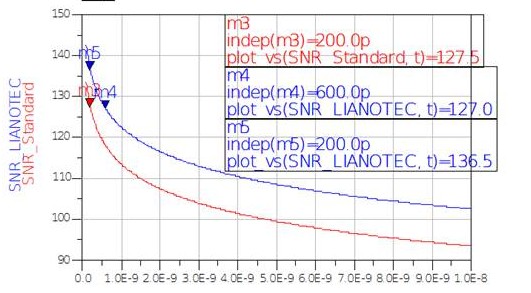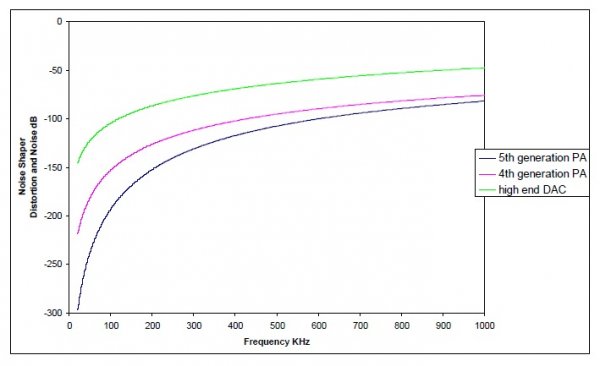I think I have read the same thing Peter St. You can look over this page:
http://www.trinity-ed.de/typo/index.php?id=19&L=1
Hey, that's the one ! Super.
I think it got confusing in the translation to English. He refers to using his 8 DACs in a time delay as analog oversampling (the LIANOTEC as he refers to it). It really is just staggering the time each DAC is fed the digital signal and combining the outputs to create 8x interpolation.
Not being native English myself I don't have too many problems with that. Point is that it depends somewhat on the difference where the analog part of this *happens* versus where it is *initiated* which should be in digital. For this we need to know a little bit more about electronics (and Dietmar will correct me where I go wrong) and in this case this is about the sheer impossibility to delay in analog. So, if that could happen (or happens with the Trinity) it would be a pure analog thing. Btw, because the times between samples are ultra short I think I would manage to do it in pure analog after all - just use certain lengths of wires. Or various types of resistences and varying current drivers. And only with a fixed sampling rate.
But no. This will just happen in the digital domain (1000 times more easy) and all it further needs is the summing of the currents which go automatically. And since the summing happens in the analog domain one could call it an "analog oversampling" but not all the way fair IMO. Still, digital it certainly also is not.
And so it is initialized in digital while it has its working (or workout) in analog.
How this is for the better for jitter is quite something else, or let's say that I don't see that; this is a totally different subject where now not samples are to be released from some best low jitter (phase noise !) oscillator, but something has to be arranged for the delay-timing as well. So mind you, one sample arrives at the input (behind the interface) and it has to be split into 8 samples with the exact same subsequent timing (the output samples are all 8 the same one). Now, if that were to let loose on 352.8 material it would need an ~88MHz oscillator (maybe I'm off one factor of 2) which needs to be 4 times better on the jitter because of the 4 times more close spacing of the output samples. Well, something like that. Do notice that I compare with my own situation of 768 as max which compares to 3072 mentioned for the Trinity. So as mentioned in that other thread, Phasure's oscillators could be 4x "worse" but the 4x better in the Trinity is just a necessity to be "on par" so to speak.
Another thing is that we don't need low ppm etc. (so no low ppb as well) but low phase noise. Didn't see anything about that.
In the end the story is way longer, because the 3072 sounds nice but the reasons for it do not much (to me, and this is what my large post is a.o. going to be about).
That I for myself all combine it with an isolated interface of which I exactly know what it all brings in the design department to not let that imply higher jitter - and that I can expect this isolation not working for the better at all in the Trinity, is again another very long story. And just saying, for me at this moment all this needs is a phase noise plot of the oscillator, no matter Dietmar would not understand why this is sufficient (at this moment !).
Down the page he explains that without a digital filter lower sample rates were not produced well enough. So for 32-96 khz sample rates they employ 8x digital oversampling which is then fed through the LIANOTEC system to get a further 8x interpolation. A total of 64x samples as I understand it. So if I understand this correctly at the sample rates higher than 96 khz there is no digital oversampling, but merely the 8x interpolation from the time delayed output of the 8 DAC's per channel.
In my view this is all totally correct (I mean the reasons for it etc.). This is why I needed to find that text again because it is crucial for good design.
It could also be crucial for better understanding in general because I don't think I saw much about this from the nay sayers.
That this is just a ringing filter is something quite else, which *also* should be taken into account, but now from the yah sayers.
I still feel as though something is confused somewhere in that description or something left out. That would lead to a bit rate output higher at the lower sample rates. For instance 48 khz would become 3.072 mhz and 192 khz would become 1.536 mhz. Maybe he is using 2x oversampling at the higher bit rates, and I missed that in the description. Either way it appears he is not using a filter at the output at any sample rates.
Hmm ... I didn't see anything wrong with it while going through it all, but let's see;
First off, LIANOTEC is not about bit rates as such. I mean, not as in "bandwidth". There's no additional bandwidth needed anywhere, except for something which clocks into the buffers before the samples are output (but never mind, because there are a few ways to set this up).
So start at the end : 8x LIANOTEC implies an output rate of 3072 (for 48KHz based material). But watch out, this only happens when the input sampling rate is 384. Thus, when the input rate is 192, the output rate is only 1536. 96 would lead to 768. In the mean time that page you found back for me, states that up to 96 an 8x oversampling filter is utilized. So, 8x 96 = 768. This now *is* bandwidth related, because the limit of the 1704. But no worries, because what comes behind it is LIANOTEC and this is just that "dumn" thing. All what happens again is that 8 1704's are time delayed again and the output will be 8x 768 = 6144. Nothing will sweat because as said, this is not bandwitdh related (up to some extend, but alas). So you are correct. And I myself *was* correct in not seeing it because I couldn't find that page anymore.
One notice now I myself am as far as this : The phase noise (jitter) has to be two times better again and the oscillator should be in the 192MHz range (the 48KHz based).
Last note for now : I personally have learned that as it seems each EE from Münich are amongst the best. Dietmar will be another one and if I were you guys I wouldn't start with distrust. That a couple of things are beyond our imagination or knowledge is something else, and that no EE can even start to explain to us laymans how these things are (e.g.) "allowed" to work, is not his fault. That in the mean time such a same EE can bash over email to customers from me saying things like I don't know sh*t on several subjects apparently is part of the job, but not much my style.
Dietmar, I realize that I am the xth person who charismatically tells others through a stupid internet forum how anoher one's (yours) product work. Please feel free to correct me anywhere necessary on the above. At least I myself don't like it when others do about my product, especially when it is plain wrong of course.
More to come ...
Peter















